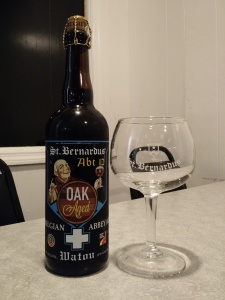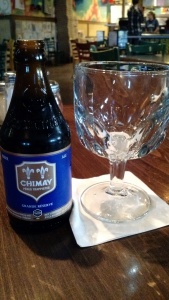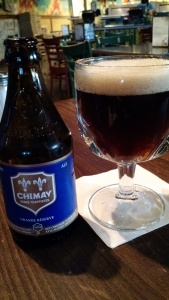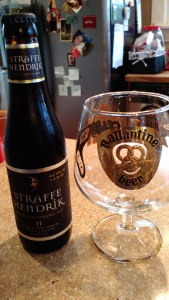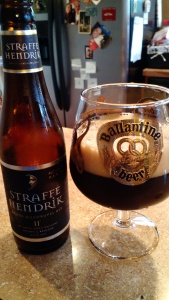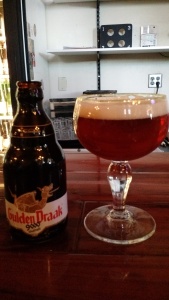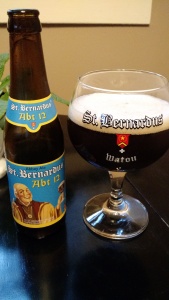
Rochefort 10 with a branded vintage goblet. Copyright 2015 by Andrew Dunn.
It’s Easter Sunday, and my wife and I have prepared a holiday feast. I baked a beautiful ham with Hawaiian pepper jelly, a gift from my island friend. We also made potato salad, green beans, rolls, and macaroni and cheese.
Of course, special holidays call for special beers. I don’t do feasts without my favorite beer, Rochefort 10. This is the flagship beer from the Rochefort Brewery near the Belgian town of the same name.
All three Rochefort beers are products of the Abbey of Notre-Dame de Saint-Rémy, a Trappist monastery. Trappists are charged by the Rule of St. Benedict to live by the work of their own hands. And this beer is simply a divine work of art.
Rochefort 10 is an abbey quadruple or Belgian abt. The monks use water from a well within their monastery to make the beer. To be an authentic Trappist product, as Rochefort is, the beer must be made by the brothers themselves.
How do I know it is my favorite? Easy, I conducted a blind taste test, which I referred to in a previous post.
I pitted the Rochefort 10 against Chimay Blue, St. Bernardus Abt 12, and the legendary Westvleteren 12. Rochefort 10 won out in both rounds. Westvletern 12 was a close second.
So why do I say it is my favorite for now? Well, I am really fond of Achel’s Extra Bruin. So I’ll be doing another taste test, which I will naturally report on here.
Anyway, it seems apropos to review my favorite monk-made beer on Easter Sunday. Plus, it pairs well with good food and warm family meals.
By the way, I’m using a vintage Rochefort crystal goblet for today’s review. It is one of my favorite beer glasses as it feels loved and used. The newer Rochefort goblets are rimmed in gold and look fancier.
Smell: It’s a wonderful bouquet of red wine, rum cake, and raisin bread.
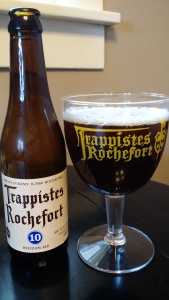
Rochefort 10 poured into a branded vintage goblet. Copyright 2015 by Andrew Dunn.
Sight: It pours an antique wood brown and is completely opaque. It has a small lacy ivory head. The brew is peppered with heavy dark sediment.
Taste: Heavenly. Rochefort 10 has a complex flavor. You taste dark spiced rum and molasses. Then there is a bourbon flavor and burn in the mouth and throat. But it finishes with a red wine dryness, like a fine burgundy. The spiciness intensifies as you drink and as the beer warms.
Alcohol: Rochefort 10 tips the scale at a hefty 11.3 percent. This is not a chugging beer. In fact, that would be down right sacrilegious. Sip this beer. Nurse this beer. Respect the work, the labor, the love that went into it. And when you finish it, mourn its loss.
Overall: This beer is truly blessed. I proselytize on its behalf. I sing its praises to any that will hear. I implore you, try it. You too will become a convert. Except my wife. She hates it. Then again, she likes IPAs.
Bottom line: Brace yourself. I bought my bottle for $7.25 at a bottle shop in Asheville, North Carolina. I know. But seriously, that’s actually cheap. I’ve seen it go for higher than $8 a bottle. And no, it’s not a 750 ml bottle. We are talking about just a regular old beer bottle. I am sorry. Yet this is the price we pay for perfection. Accept no false idols.


